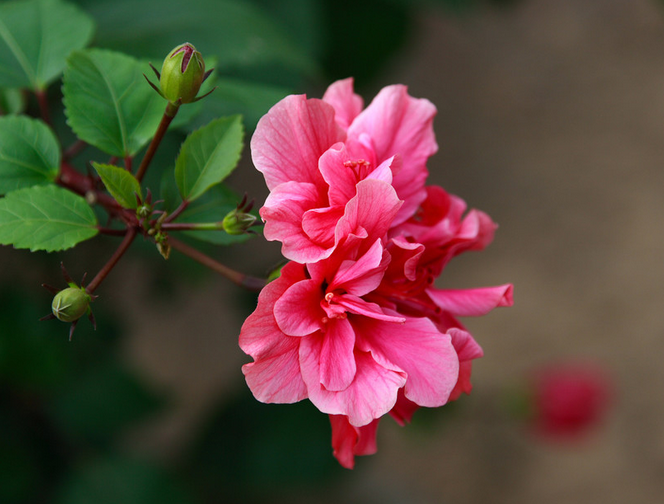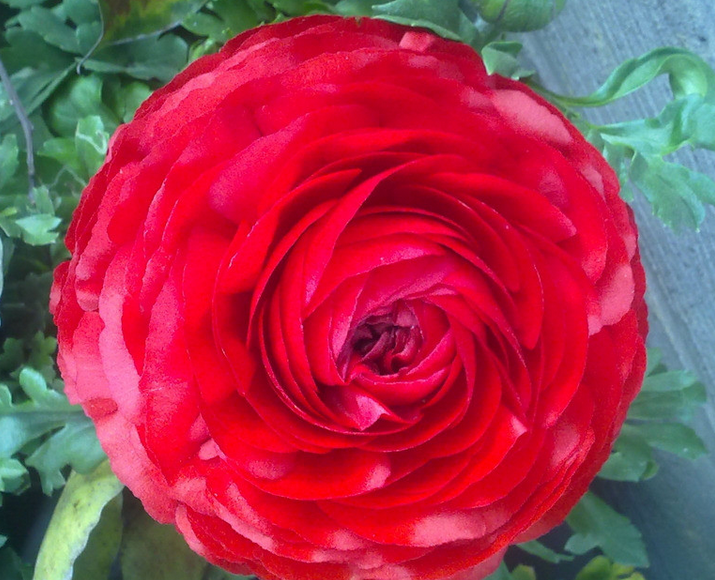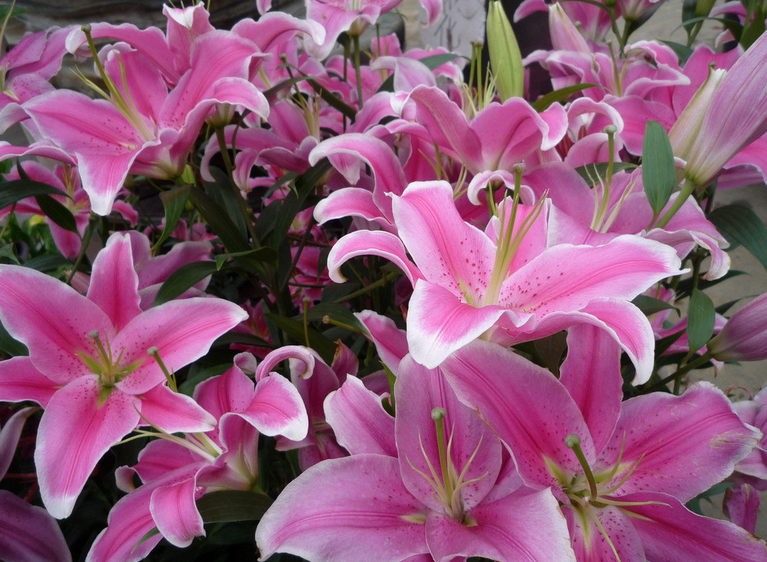Analysis of Culture methods of Mulberry Leaf Peony
Mulberry leaf peony is a famous flower in China, with large flowers and many colors. Although it is ridiculed in the morning, it goes on and on, with a long flowering period and the most blooming summer and autumn flowers. Many people want to raise mulberry leaf peonies on their own. The following is to learn more about the cultivation methods of mulberry leaf peony with the editor of the decoration network.

Analysis of Culture methods of Mulberry Leaf Peony
Culture methods of Mulberry Leaf Peony
1. Because mulberry leaf peony is a positive flower, it should be placed in the place where the sunshine is long, so that it can be fully exposed to sunlight in summer, and the lack of light can easily make the flower bud fall, the flower becomes smaller and the flower color is dim.
2. Too dry and wet will affect flowering. In the summer blooming season, depending on the air temperature and the dry and wet condition of the basin soil, water can be watered once or twice a day, but dry and thoroughly irrigated to prevent rotting roots due to high temperature and stagnant water. Watering is better before 9: 00 a. M. or after 5: 00 p. M. to minimize the temperature difference between air temperature and water temperature. At noon, water can be sprayed on the leaf surface and around the flowerpot to reduce the leaf temperature and maintain air humidity. The flowers of Fusang are very tender and cannot be sprayed directly to the flowers, otherwise they can easily cause burns.
3. Change the basin every year, use rotten bean cake and poultry dung as base fertilizer, and then apply well-absorbed and effective compound fertilizer. 0% potassium dihydrogen phosphate can be sprayed to the leaves every 7-10 days to make the leaves green and breed more buds.
4. Fusang is not resistant to cold, so whether it can survive the winter safely is the key. The winter temperature should be kept at 12-15 ℃, and it is easy to freeze to death if it is lower than 5 ℃. However, it should be noted that the temperature should not exceed 20 ℃. Too high temperature will cause branches and leaves to grow, affect dormancy, and blossom in the coming year. The basin soil should maintain 30% relative humidity in winter and should not be watered in large quantities. It is generally not necessary to apply fertilizer in winter, and only a small amount of liquid fertilizer is needed.
5. Pruning should be carried out in spring, leaving stout branches to ensure the concentration of nutrients and the blooming of flowers.
Propagation methods of Mulberry Leaf Peony
1. Mulberry leaf peony cutting
Cutting is the most commonly used method of mulberry leaf peony propagation, which can be cut at any time from early spring to late autumn, with the highest survival rate in the rainy season and can only be carried out in the greenhouse in winter. The best cuttings are one-and-a-half Lignification, about 10 cm long, cut off the lower leaves, leave the top leaves, cut flat, insert in the sand bed, spray water every day to maintain high air humidity. It takes root three weeks after insertion and can be put on the pot after 45 days of growth. Generally speaking, the mulberry leaf peony cut in that year can blossom in the second year.
2. High pressure propagation of mulberry leaf peony.
It is mainly aimed at the woody branches, which are more commonly used in woody plant species. Mulberry leaf peony can also give it a try. It is safer than cutting high-pressure propagation, at least it will not die. Haha, the following is a high-pressure sample diagram. The picture is not mulberry leaf peony.
3. Striping propagation
This is also very simple, that is, press the branches of mulberry leaf peony in the soil, let them take root, and cut off after taking root, the principle is similar to high pressure, but there are slight differences according to the actual situation. These three methods are very simple and operable. Flower friends can give it a try.
An Analysis of the Culture methods of Mulberry Leaf Peony to teach you to cultivate Mulberry Leaf Peony easily
Mulberry leaf peony is a famous flower in China, with large flowers and many colors, although it is ridiculed in the morning, but it is continuous, with a long flowering period and the most prosperous summer and autumn flowers, which is deeply loved by people. many people want to raise mulberry leaf peonies themselves, but they do not know how to raise them. Next, let's learn more about it with the editor of the decoration network.
An Analysis of the Culture methods of Mulberry Leaf Peony to teach you to cultivate Mulberry Leaf Peony easily
Culture methods of Mulberry Leaf Peony
1. Because mulberry leaf peony is a positive flower, it should be placed in the place where the sunshine is long, so that it can be fully exposed to sunlight in summer, and the lack of light can easily make the flower bud fall, the flower becomes smaller and the flower color is dim.
2. Too dry and wet will affect flowering. In the summer blooming season, depending on the air temperature and the dry and wet condition of the basin soil, water can be watered once or twice a day, but dry and thoroughly irrigated to prevent rotting roots due to high temperature and stagnant water. Watering is better before 9: 00 a. M. or after 5: 00 p. M. to minimize the temperature difference between air temperature and water temperature. At noon, water can be sprayed on the leaf surface and around the flowerpot to reduce the leaf temperature and maintain air humidity. The flowers of Fusang are very tender and cannot be sprayed directly to the flowers, otherwise they can easily cause burns.
3. Change the basin every year, use rotten bean cake and poultry dung as base fertilizer, and then apply well-absorbed and effective compound fertilizer. 0% potassium dihydrogen phosphate can be sprayed to the leaves every 7-10 days to make the leaves green and breed more buds.
4. Fusang is not resistant to cold, so whether it can survive the winter safely is the key. The winter temperature should be kept at 12-15 ℃, and it is easy to freeze to death if it is lower than 5 ℃. However, it should be noted that the temperature should not exceed 20 ℃. Too high temperature will cause branches and leaves to grow, affect dormancy, and blossom in the coming year. The basin soil should maintain 30% relative humidity in winter and should not be watered in large quantities. It is generally not necessary to apply fertilizer in winter, and only a small amount of liquid fertilizer is needed.
5. Pruning should be carried out in spring, leaving stout branches to ensure the concentration of nutrients and the blooming of flowers.
Propagation methods of Mulberry Leaf Peony
1. Mulberry leaf peony cutting
Cutting is the most commonly used method of mulberry leaf peony propagation, which can be cut at any time from early spring to late autumn, with the highest survival rate in the rainy season and can only be carried out in the greenhouse in winter. The best cuttings are one-and-a-half Lignification, about 10 cm long, cut off the lower leaves, leave the top leaves, cut flat, insert in the sand bed, spray water every day to maintain high air humidity. It takes root three weeks after insertion and can be put on the pot after 45 days of growth. Generally speaking, the mulberry leaf peony cut in that year can blossom in the second year.
2. High pressure propagation of mulberry leaf peony.
It is mainly aimed at the woody branches, which are more commonly used in woody plant species. Mulberry leaf peony can also give it a try. It is safer than cutting high-pressure propagation, at least it will not die. Haha, the following is a high-pressure sample diagram. The picture is not mulberry leaf peony.
3. Striping propagation
This is also very simple, that is, press the branches of mulberry leaf peony in the soil, let them take root, and cut off after taking root, the principle is similar to high pressure, but there are slight differences according to the actual situation. These three methods are very simple and operable. Flower friends can give it a try.
Analyzing the Culture method of Fusang Flower Picture appreciation of Fusang Flower
Fusang was a popular ornamental plant in ancient times, and now a large number of new species of hybrid ornamental Fusang are popular all over the world. Today, we will introduce the culture method of Fusang flower. The Fusang flower was not seen by Europeans before. When they first saw the Fusang flower, they thought it was double, red, and originated from China, so they called it the Chinese rose. It can be seen that it is delicate and gorgeous. Do you want to know more about it? Take a look at the following contents and enjoy the beautiful pictures of Fusang flowers together.
The Culture method of Fusang Flower
English name: hibiscus
Hibiscus rosa-sinensis L.
Aliases: red hibiscus, Rizhi, Buddha mulberry, Fusang, red hibiscus, hibiscus, safflower, Zhaodian red, Song hibiscus, two safflower, flower, safflower, fake peony, lantern basket flower
Family: Malvaceae of Malvaceae
Genus: Hibiscus of hibiscus
The Culture method of Fusang Flower
Distribution of origin: originated in southern China, distributed in Fujian, Guangdong, Guangxi, Yunnan, Sichuan provinces.
Morphological features: evergreen shrubs, which can be up to 6 meters high, are generally trimmed to more than 1 meter high in the garden. Hibiscus stem straight and much branched, leaves Lu color, alternate, leaf shape is broadly ovate to narrowly ovate, similar to mulberry leaves, the leaf margin is coarsely serrated or engraved. The flower volume is large, the flower stalk has drooping or straight up two kinds, the flower is solitary in the axilla of the upper leaf, the flower is characterized by a long filament tube growing in the flower center, the flower color is presented in a variety of colors, the flowering period is all year round, the summer and autumn is the most prosperous.
The Culture method of Fusang Flower
The Culture method of Fusang Flower
Picture appreciation of Fusang Flower
The Culture method of Fusang Flower
1. Growth habits: Fusang born in the mountain sparse forest, sexual preference for warm, humid climate, not resistant to cold, requires sufficient sunshine. Fu mulberry has the advantages of easy growth, strong stress resistance, few diseases and insect pests, and grows well in areas with an average temperature of more than 10 ℃. It is suitable for slightly acidic soil with rich organic matter and pH value of 6.5-7.
2. Propagation methods: Fusang is commonly used in cutting and grafting propagation. Cuttings can be carried out except in winter, and the survival rate is high in Meiyu season. The best cuttings are one-and-a-half-lignified cuttings, with long 10cm, retaining apical leaves, flat incisions, inserting sand beds, and rooting about 3 weeks after insertion. The grafting method is mostly used for double flower varieties with difficulty in cutting, and the rootstock uses a single flower to support mulberry.
3. Change the pot and change the soil: the pot soil should be loose and fertile sandy loam, and the pot should be changed before moving out in early spring in April every year. Three things should be done when changing the basin: the first is to replace the new culture soil; the second is to cut off part of the overdense curly whisker root; the third is to apply sufficient base fertilizer and slightly add phosphate fertilizer to the bottom of the basin.
4. Pruning and shaping: in order to keep the Fusang flower tree shape graceful and with a large amount of flowers, according to the strong ability of sprouting branches and tillers, pruning and shaping can be carried out before and after leaving the room in early spring, with the exception of 2-3 buds at the base, all the upper branches are cut, pruning can promote the development of new branches, the growth will be more exuberant, and the plant shape will also be beautiful. After pruning, due to the reduction of aboveground consumption, it is necessary to properly control water and fertilizer.
5. Pest management: the main pests of Fusang are aphids, chaff, cotton blowing and mites (commonly known as red spiders). After the occurrence of aphids and mites, aphids and mites can be diluted by a certain number of drugs, such as aphids and mites, and then foliar spray can be used to kill aphids and mites once a week, usually 2-3 times. Bran medium and cotton blowing medium can harm leaves and epidermis. Generally, imidacloprid drugs or their modifiers can be used to dilute a certain number of times, and then spray to kill the affected parts. The harm is serious, but once every 10 days, 3 times can be basically extinct.
- Prev

Analysis of Culture methods and matters needing attention of celery Leaf Peony
Celery leaf peony gets its name because its leaves are more like celery. Many people want to raise celery leaf peony, but they don't know how to do it. So what should be done when raising celery leaves and peonies? Are there any methods and precautions? Next, let's learn more about it with the editor of the decoration network.
- Next

How to cultivate lilies indoor culture methods
The lilies are pure and elegant and are known as "Yunchang fairies", so many people want to cultivate them indoors. The editor reminds you that when you cultivate lilies, you must first master some relevant knowledge. Here, let's learn more about the methods of lily culture with a decorated network editor.
Related
- Fuxing push coffee new agricultural production and marketing class: lack of small-scale processing plants
- Jujube rice field leisure farm deep ploughing Yilan for five years to create a space for organic food and play
- Nongyu Farm-A trial of organic papaya for brave women with advanced technology
- Four points for attention in the prevention and control of diseases and insect pests of edible fungi
- How to add nutrient solution to Edible Fungi
- Is there any good way to control edible fungus mites?
- Open Inoculation Technology of Edible Fungi
- Is there any clever way to use fertilizer for edible fungus in winter?
- What agents are used to kill the pathogens of edible fungi in the mushroom shed?
- Rapid drying of Edible Fungi

